
It’s a land of delicate art and bustling commerce, of rich traditions and dizzying modernity; a jumble of sights, sounds, and tastes that for visitors are truly foreign – and truly fascinating. This well-crafted tour features the highlights of Tokyo and Kyoto, engages us in local life, and takes us off the beaten path to the lovely historic cities of Takayama and Kanazawa.
From $7,184


It’s a land of delicate art and bustling commerce, of rich traditions and dizzying modernity; a jumble of sights, sounds, and tastes that for visitors are truly foreign – and truly fascinating. This well-crafted tour features the highlights of Tokyo and Kyoto, engages us in local life, and takes us off the beaten path to the lovely historic cities of Takayama and Kanazawa.
Please note: We use a variety of distinctive hotels on this tour
Click on this icon in the Dates and Prices section below to view the hotel summary for selected departure date
Ratings are based on the Hotel & Travel Index, the travel industry standard reference. Unrated hotels may be too small, too new, or too remote to be listed.
Day Day Itinerary Hotel Rating |
1 1 Depart U.S. for Tokyo |
5 |
6-7 |
8-9 |
10-12 |
13 13 Depart Osaka for U.S. |
| 1 | Depart U.S. for Tokyo, Japan Depart U.S. for Tokyo, Japan |
| 2 | Arrive Tokyo Arrive Tokyo Read More Upon arrival in Tokyo, Japan’s financial, commercial, and political capital, we transfer to our hotel. As guests’ arrival times may vary, we have no scheduled activities or meals planned. Upon arrival in Tokyo, Japan’s financial, commercial, and political capital, we transfer to our hotel. As guests’ arrival times may vary, we have no scheduled activities or meals planned. |
| 3 | Tokyo B D B D Tokyo Read More After a briefing about the journey ahead, we set out to discover a small part of this amazing city that covers a staggering 847 square miles. Tokyo has managed to successfully merge the old and the new to become a fascinating and cosmopolitan destination, as we see during our stay. Our sightseeing features the Meiji Shrine, a peaceful enclave of Shinto temples and gardens. We also visit the gallery of preeminent calligrapher Koshun Masunaga, where we learn about the ancient art of Japanese calligraphy and browse the collection. Our tour ends in the Ginza District, Tokyo’s famed shopping, dining, and entertainment hub, where we can stay to explore as we wish or return to our hotel for an afternoon at leisure. Tonight, we gather for a welcome dinner at a local restaurant. After a briefing about the journey ahead, we set out to discover a small part of this amazing city that covers a staggering 847 square miles. Tokyo has managed to successfully merge the old and the new to become a fascinating and cosmopolitan destination, as we see during our stay. Our sightseeing features the Meiji Shrine, a peaceful enclave of Shinto temples and gardens. We also visit the gallery of preeminent calligrapher Koshun Masunaga, where we learn about the ancient art of Japanese calligraphy and browse the collection. Our tour ends in the Ginza District, Tokyo’s famed shopping, dining, and entertainment hub, where we can stay to explore as we wish or return to our hotel for an afternoon at leisure. Tonight, we gather for a welcome dinner at a local restaurant. |
| 4 | Tokyo B B Tokyo Read More Our tour of Tokyo continues this morning at the Imperial Palace, surrounded by moats and ramparts and home of the Japanese Imperial Family. Here we visit the East Gardens, part of the innermost circle of defense of the historic Edo Castle that housed the Tokugawa shogunate from the 17th to mid-19th centuries. We continue on to the Buddhist Asakusa Kannon, Tokyo’s oldest temple (c. 645 CE), and the adjacent Nakamise shopping arcade, dating to the 17th century. Lastly, we visit the Tokyo National Museum, one of Japan's most extensive museums, housing a vast collection of art and antiquities from Japan and other Asian countries. This afternoon is free for independent exploration. We are at leisure for both lunch and dinner on our own today, and the choices are endless. Tokyo of course features excellent sushi and traditional Japanese cuisine, while also housing world-class French, Italian, Cantonese, and Thai offerings, as well as endless low-key, grab-and-go options. Your tour director will be happy to pass along restaurant suggestions. Our tour of Tokyo continues this morning at the Imperial Palace, surrounded by moats and ramparts and home of the Japanese Imperial Family. Here we visit the East Gardens, part of the innermost circle of defense of the historic Edo Castle that housed the Tokugawa shogunate from the 17th to mid-19th centuries. We continue on to the Buddhist Asakusa Kannon, Tokyo’s oldest temple (c. 645 CE), and the adjacent Nakamise shopping arcade, dating to the 17th century. Lastly, we visit the Tokyo National Museum, one of Japan's most extensive museums, housing a vast collection of art and antiquities from Japan and other Asian countries. This afternoon is free for independent exploration. We are at leisure for both lunch and dinner on our own today, and the choices are endless. Tokyo of course features excellent sushi and traditional Japanese cuisine, while also housing world-class French, Italian, Cantonese, and Thai offerings, as well as endless low-key, grab-and-go options. Your tour director will be happy to pass along restaurant suggestions. |
| 5 | Tokyo/Fuji-Hakone-Izu National Park/Hakone B D B D Tokyo/Fuji-Hakone-Izu National Park/Hakone Read More Japan’s pastoral side is on tap as we leave Tokyo for Fuji-Hakone-Izu National Park. Here sits imposing Mount Fuji, (or Fuji-san, as it is known by locals) a dormant volcano last active in 1707 with a perfectly symmetrical cone that rises to 12,388 feet. We learn about environmental and conservation efforts on the mountain at the Mount Fuji World Heritage Center and then enjoy a relaxing cruise on Lake Ashi, with Mount Fuji in the background. Leaving the park, we travel to the town of Hakone, where we spend the night at a ryokan, a traditional Japanese inn where we take off our shoes upon entering. After enjoying a Japanese-style Kaiseki dinner, a serene experience featuring multiple courses and focusing on artistic plating and presentation, we spend the night sleeping on one of the ryokan's futon beds. Japan’s pastoral side is on tap as we leave Tokyo for Fuji-Hakone-Izu National Park. Here sits imposing Mount Fuji, (or Fuji-san, as it is known by locals) a dormant volcano last active in 1707 with a perfectly symmetrical cone that rises to 12,388 feet. We learn about environmental and conservation efforts on the mountain at the Mount Fuji World Heritage Center and then enjoy a relaxing cruise on Lake Ashi, with Mount Fuji in the background. Leaving the park, we travel to the town of Hakone, where we spend the night at a ryokan, a traditional Japanese inn where we take off our shoes upon entering. After enjoying a Japanese-style Kaiseki dinner, a serene experience featuring multiple courses and focusing on artistic plating and presentation, we spend the night sleeping on one of the ryokan's futon beds. |
| 6 | Hakone/Takayama B D B D Hakone/Takayama Read More Today we take advantage of Japan's train system, one of the finest in the world, as we travel first by bullet train then by Limited Express Hida. Our destination is lovely Takayama in the Japanese Alps, considered one of the country’s most attractive places with its beautifully preserved Old Town and historic buildings. Our explorations center on three narrow streets in the San-machi-suji district of Takayama where, in feudal times, merchants lived amidst the authentically preserved small inns, teahouses, and sake breweries. Before we leave, guests will have the option to buy a bento box lunch, a food box artfully packed with Japanese specialties. This afternoon we attend a traditional Japanese tea ceremony here, a historic ritual of form, grace, and spirituality. Today we take advantage of Japan's train system, one of the finest in the world, as we travel first by bullet train then by Limited Express Hida. Our destination is lovely Takayama in the Japanese Alps, considered one of the country’s most attractive places with its beautifully preserved Old Town and historic buildings. Our explorations center on three narrow streets in the San-machi-suji district of Takayama where, in feudal times, merchants lived amidst the authentically preserved small inns, teahouses, and sake breweries. Before we leave, guests will have the option to buy a bento box lunch, a food box artfully packed with Japanese specialties. This afternoon we attend a traditional Japanese tea ceremony here, a historic ritual of form, grace, and spirituality. |
| 7 | Takayama B L B L Takayama Read More We pay an early visit to the riverside Miyagawa Morning Market in Takayama, a blaze of dazzling colors and foodstuffs. Here we’ll gather ingredients for lunch which we will prepare together at a nearby kitchen. After enjoying the fruits of our labors, we embark on a walking tour, visiting Takayama Jinya, a historic government house; the local sake brewery to taste Japan's unique rice wine liquor; and Takayama’s Old Town, whose well-preserved buildings and homes date to the Edo Period (1600–1868). We pay an early visit to the riverside Miyagawa Morning Market in Takayama, a blaze of dazzling colors and foodstuffs. Here we’ll gather ingredients for lunch which we will prepare together at a nearby kitchen. After enjoying the fruits of our labors, we embark on a walking tour, visiting Takayama Jinya, a historic government house; the local sake brewery to taste Japan's unique rice wine liquor; and Takayama’s Old Town, whose well-preserved buildings and homes date to the Edo Period (1600–1868). |
| 8 | Takayama/Shirakawa-Go/Kanazawa B L D B L D Takayama/Shirakawa-Go/Kanazawa Read More We leave Takayama this morning for the UNESCO World Heritage site of Shirakawa-Go Gassho-zukuri Village. Comprising buildings relocated from authentic villages nearby that were razed for a dam, the village is also a vibrant community whose residents work together to preserve the Gassho style architecture here. This unique traditional building style features simple lines supporting a steeply pitched thatched roof; 'Gassho' translates approximately to 'praying hands', and the angle of the roof's eaves are said to represent two hands coming together in Buddhist prayer. Then we visit Gokayama Village to see how traditional Japanese washi paper is made. Late this afternoon we reach the castle town of Kanazawa, an alluring coastal city that survived the ravages of World War II. We dine tonight at a local Japanese restaurant. We leave Takayama this morning for the UNESCO World Heritage site of Shirakawa-Go Gassho-zukuri Village. Comprising buildings relocated from authentic villages nearby that were razed for a dam, the village is also a vibrant community whose residents work together to preserve the Gassho style architecture here. This unique traditional building style features simple lines supporting a steeply pitched thatched roof; 'Gassho' translates approximately to 'praying hands', and the angle of the roof's eaves are said to represent two hands coming together in Buddhist prayer. Then we visit Gokayama Village to see how traditional Japanese washi paper is made. Late this afternoon we reach the castle town of Kanazawa, an alluring coastal city that survived the ravages of World War II. We dine tonight at a local Japanese restaurant. |
| 9 | Kanazawa B B Kanazawa Read More Today's tour of culturally rich Kanazawa begins with Hakukokan, a museum celebrating the art and craft of gold leaf technology. Next, we visit the Kutani Kosen Kiln, the famed, 150-year-old ceramics workshop where artists fashion prized, highly decorated pottery. We continue to Omicho Market — Kanazawa's largest food market — before our touring concludes at Kenrokuen Garden, a landmark traditional garden dating to 1676. Today's tour of culturally rich Kanazawa begins with Hakukokan, a museum celebrating the art and craft of gold leaf technology. Next, we visit the Kutani Kosen Kiln, the famed, 150-year-old ceramics workshop where artists fashion prized, highly decorated pottery. We continue to Omicho Market — Kanazawa's largest food market — before our touring concludes at Kenrokuen Garden, a landmark traditional garden dating to 1676. |
| 10 | Kanazawa/Kyoto B D B D Kanazawa/Kyoto Read More We depart this morning by train for Kyoto, formerly Japan’s Imperial Capital and now the country’s cultural and artistic center with more than 1,600 temples, hundreds of shrines, artful gardens, and historic architecture. Upon arrival, visit Nijo-jo Castle (ca. 1603), the extravagant residence of the shoguns who ruled Japan for some 250 years. Featuring imposing stone walls and deep moats, the castle has many interior security measures as well, including hidden rooms for the shogun’s bodyguards and “nightingale floors” which purposely squeak when stepped on to alert occupants of intruders. We also visit the Kyoto Museum of Crafts and Design (Fureaikan), showcasing all of Kyoto's 74 different métiers in one place. We depart this morning by train for Kyoto, formerly Japan’s Imperial Capital and now the country’s cultural and artistic center with more than 1,600 temples, hundreds of shrines, artful gardens, and historic architecture. Upon arrival, visit Nijo-jo Castle (ca. 1603), the extravagant residence of the shoguns who ruled Japan for some 250 years. Featuring imposing stone walls and deep moats, the castle has many interior security measures as well, including hidden rooms for the shogun’s bodyguards and “nightingale floors” which purposely squeak when stepped on to alert occupants of intruders. We also visit the Kyoto Museum of Crafts and Design (Fureaikan), showcasing all of Kyoto's 74 different métiers in one place. |
| 11 | Kyoto B B Kyoto Read More More of Kyoto is on tap today, with visits to the otherworldly Arashiyama Bamboo Grove, where the stalks of bamboo reach three stories into the air; Ryoan-ji, a Zen Buddhist temple whose acclaimed dry garden epitomizes the simplicity of Zen meditation; and Kinkaku-ji Temple, the beloved lakeside Temple of the Golden Pavilion, set on pillars suspended over the water. This afternoon, we enjoy a traditional performing arts show in the famous Gion theater district. Dinner tonight is on our own in this traditional, yet modern city. Kaiseki cuisine has its roots here, and you're sure to find elevated Japanese restaurants to suit your taste, as well as a variety of udon shops, vegan offerings, and takeaway options. More of Kyoto is on tap today, with visits to the otherworldly Arashiyama Bamboo Grove, where the stalks of bamboo reach three stories into the air; Ryoan-ji, a Zen Buddhist temple whose acclaimed dry garden epitomizes the simplicity of Zen meditation; and Kinkaku-ji Temple, the beloved lakeside Temple of the Golden Pavilion, set on pillars suspended over the water. This afternoon, we enjoy a traditional performing arts show in the famous Gion theater district. Dinner tonight is on our own in this traditional, yet modern city. Kaiseki cuisine has its roots here, and you're sure to find elevated Japanese restaurants to suit your taste, as well as a variety of udon shops, vegan offerings, and takeaway options. |
| 12 | Kyoto B D B D Kyoto Read More We continue our encounter with Kyoto today. On tap: the important Fushimi Inari shrine, with its trails straddled by some 1,000 red torii gates and Sanjyusangendo Hall (c. 1266), an important Buddhist temple housing 1,000 statues of the Thousand-Armed Kannon deity. Then this afternoon is at leisure; tonight we toast our Japan adventure at a farewell dinner at a local restaurant. We continue our encounter with Kyoto today. On tap: the important Fushimi Inari shrine, with its trails straddled by some 1,000 red torii gates and Sanjyusangendo Hall (c. 1266), an important Buddhist temple housing 1,000 statues of the Thousand-Armed Kannon deity. Then this afternoon is at leisure; tonight we toast our Japan adventure at a farewell dinner at a local restaurant. |
| 13 | Depart for U.S. B B Depart for U.S. Read More This morning we travel by motorcoach to the Osaka airport, where we board our return flight to the United States. This morning we travel by motorcoach to the Osaka airport, where we board our return flight to the United States. |
| Mar | Apr | May | Aug | Sep | Oct | Nov | |
| Tokyo | 54 | 62 | 72 | 86 | 78 | 70 | 60 |
| Kyoto | 53 | 65 | 75 | 87 | 82 | 74 | 62 |
| Mar | Apr | May | Aug | Sep | Oct | Nov | |
| Tokyo | 54 | 62 | 72 | 86 | 78 | 70 | 60 |
| Kyoto | 53 | 65 | 75 | 87 | 82 | 74 | 62 |
Discover the city reborn from the atomic destruction of World War II, now a modern and cosmopolitan urban center whose residents warmly welcome American visitors.
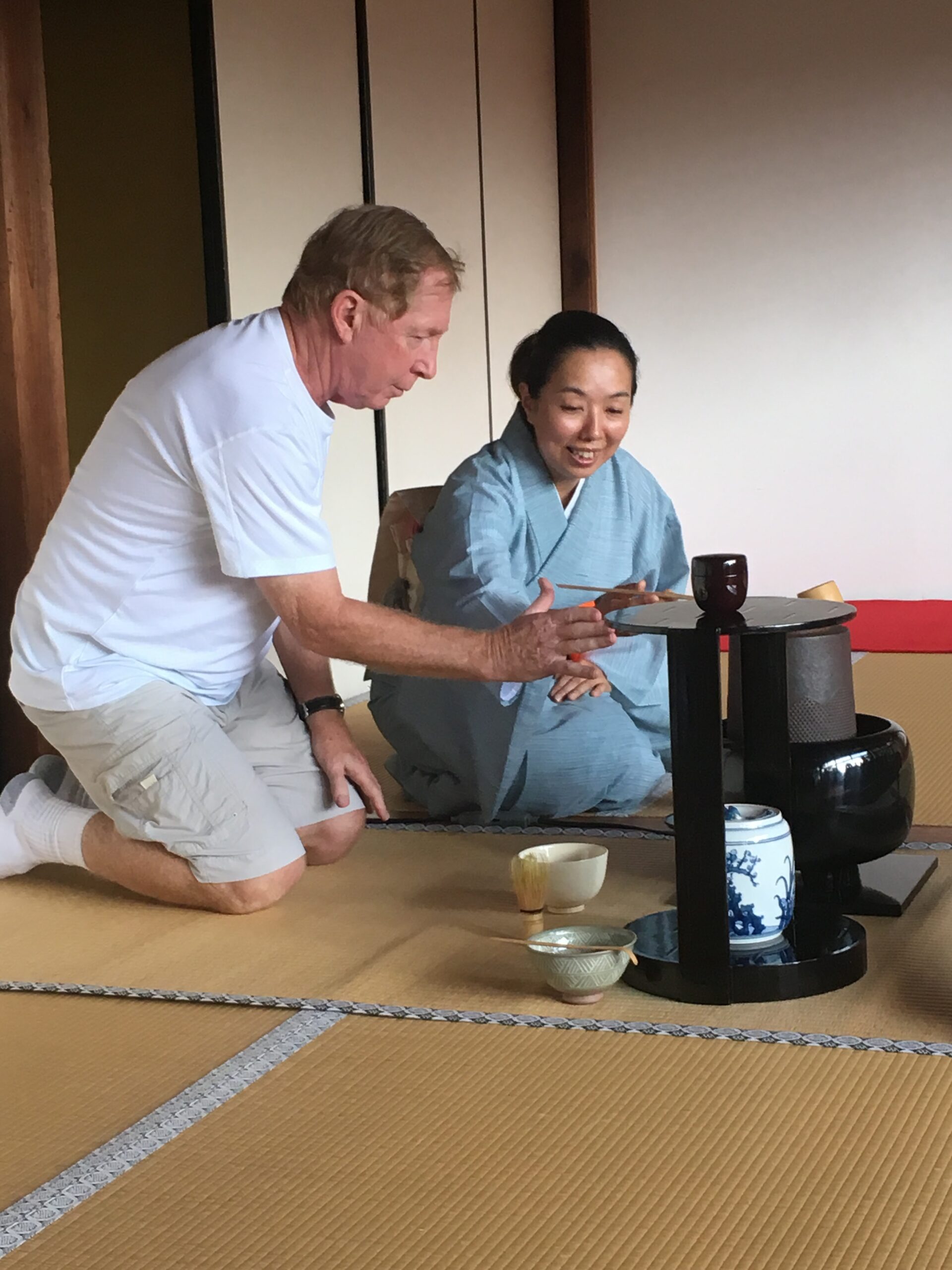
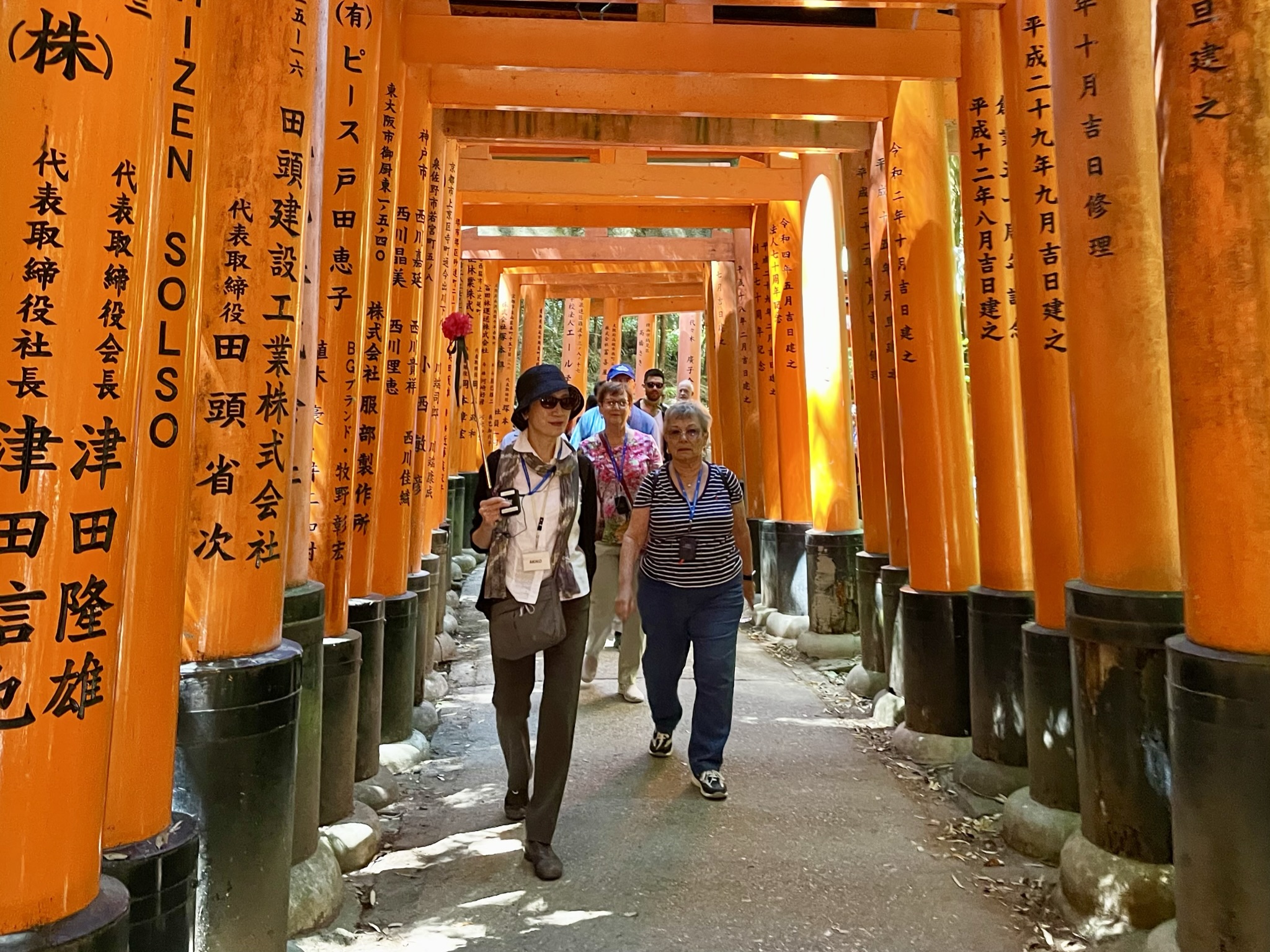
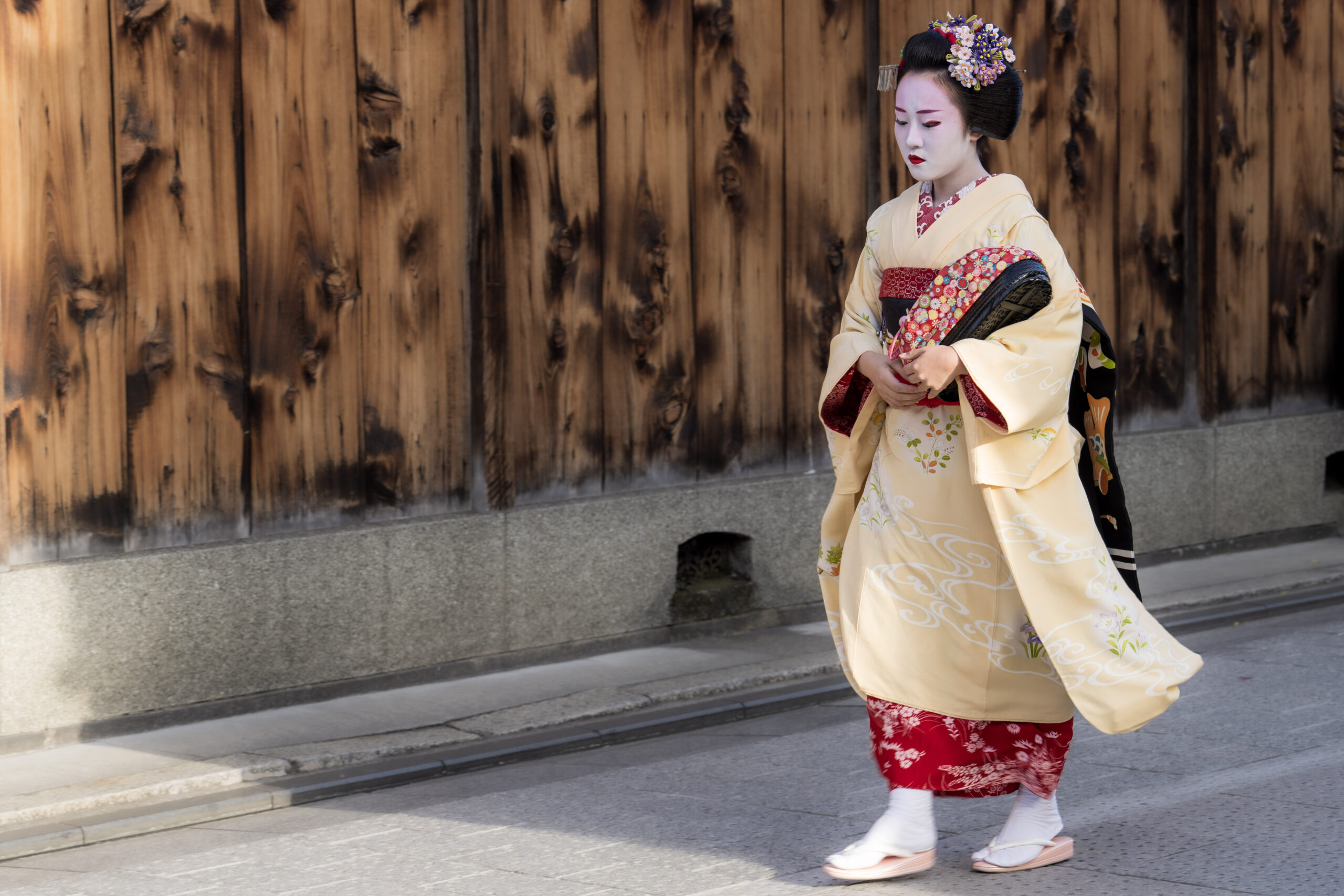
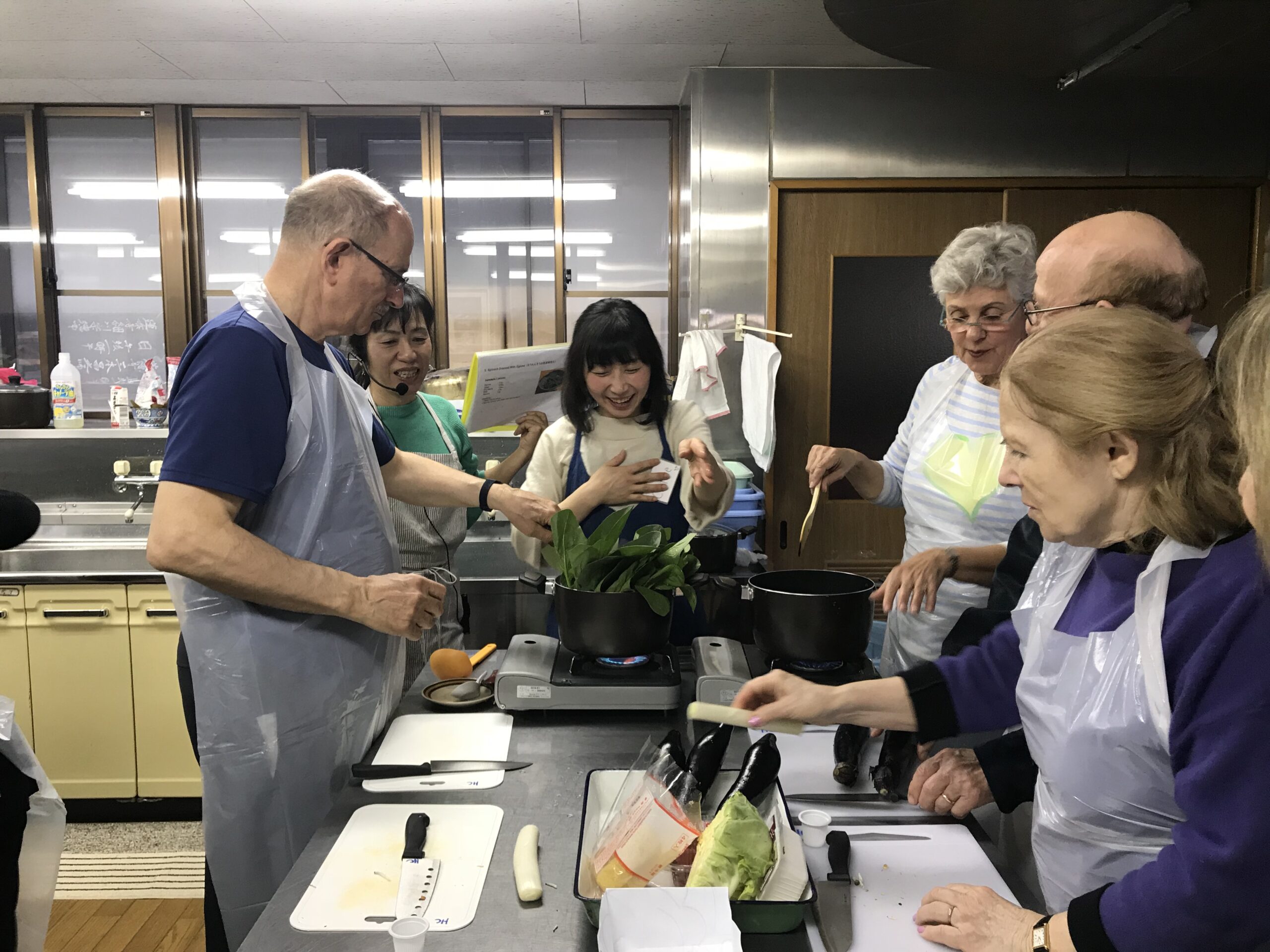
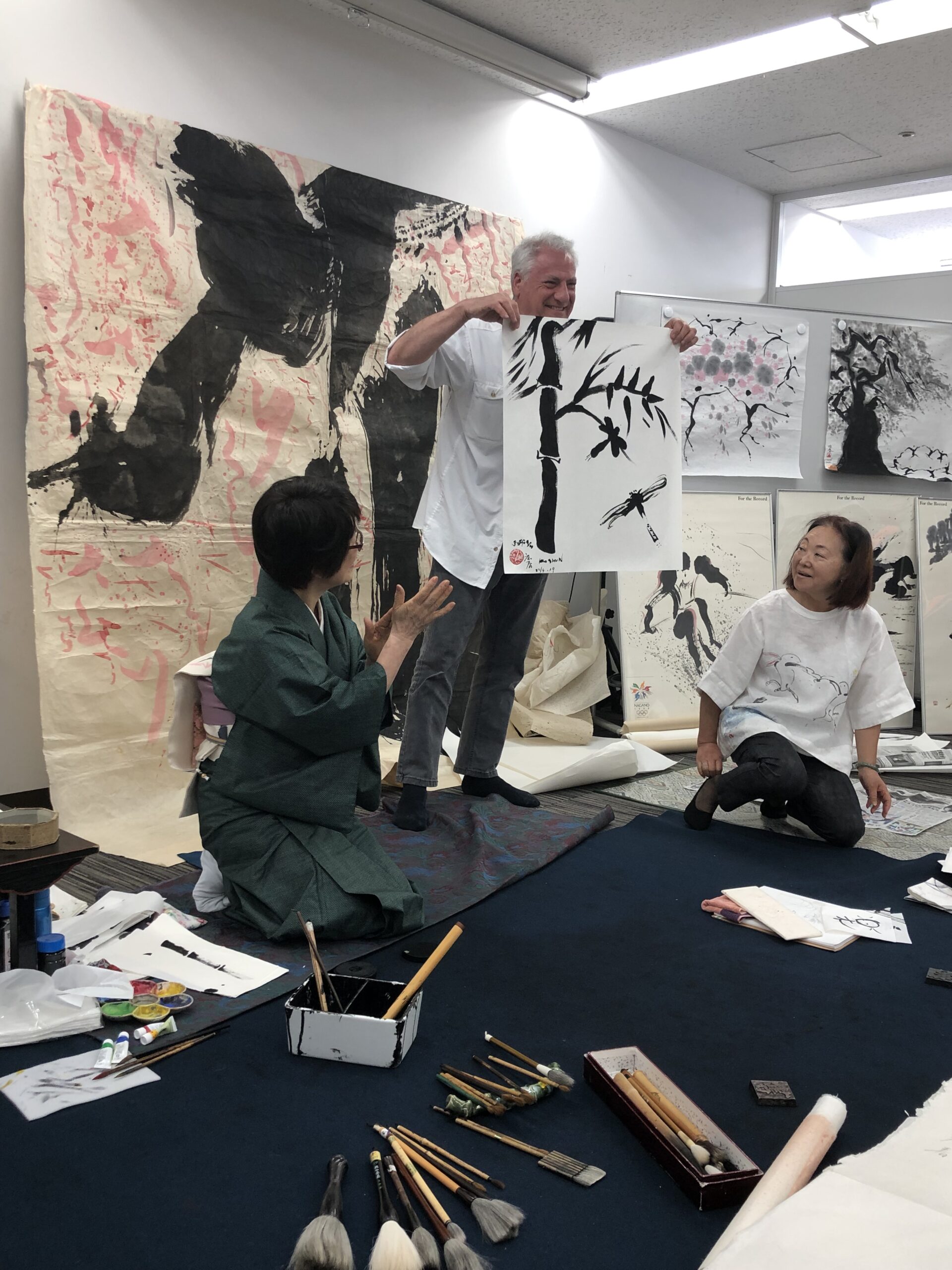
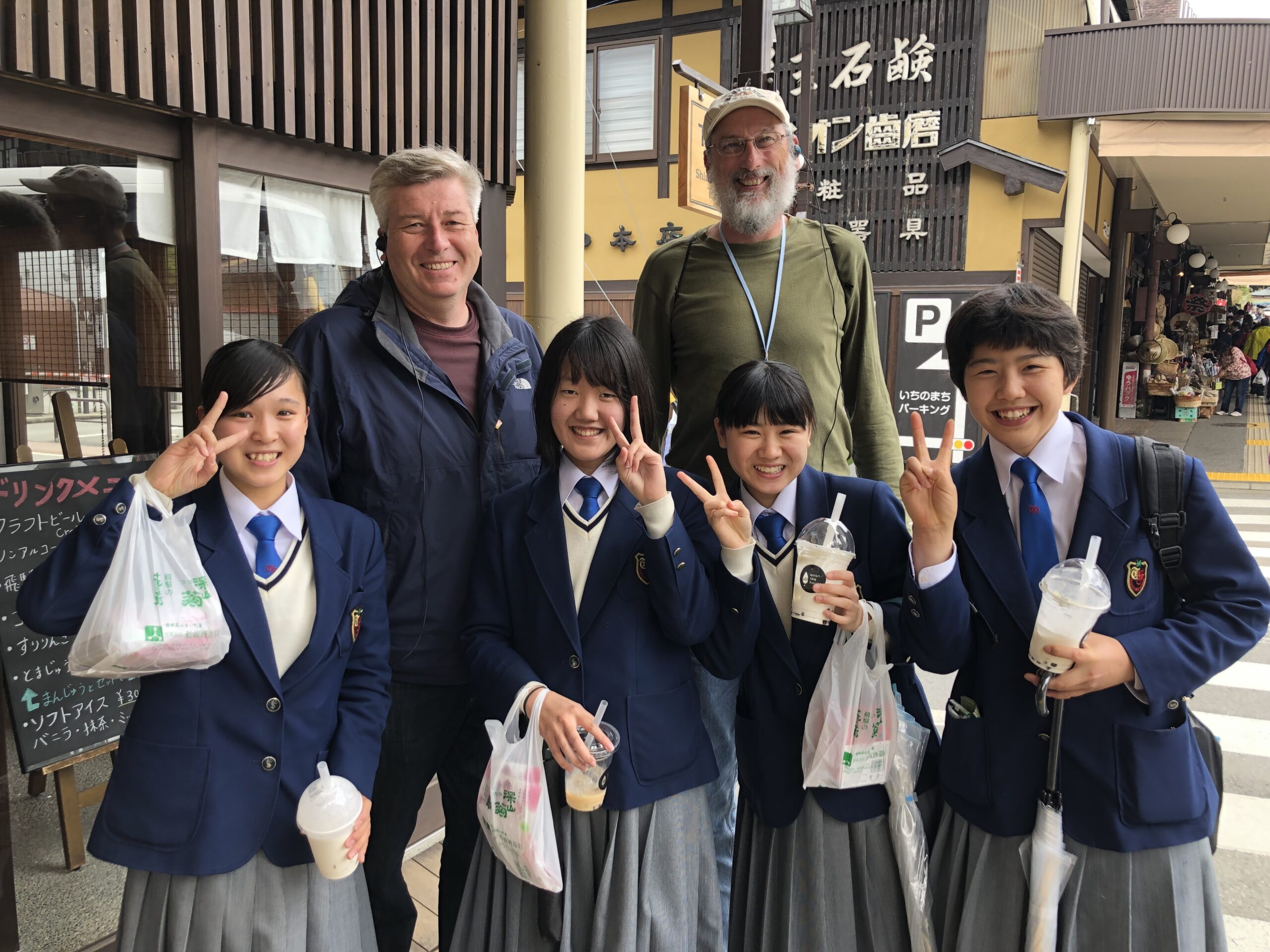
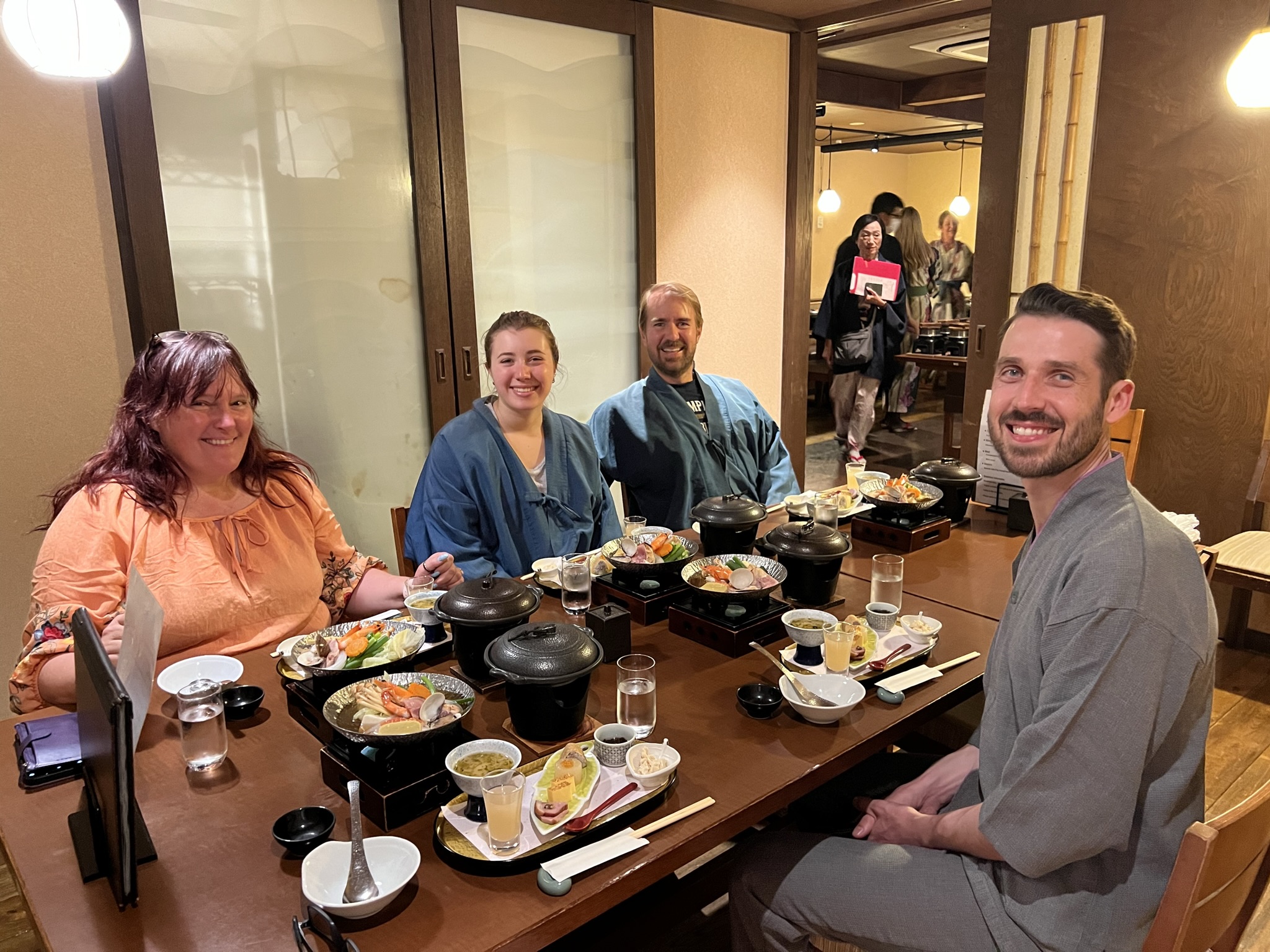
By using this website you are agreeing to our Cookie Policy.